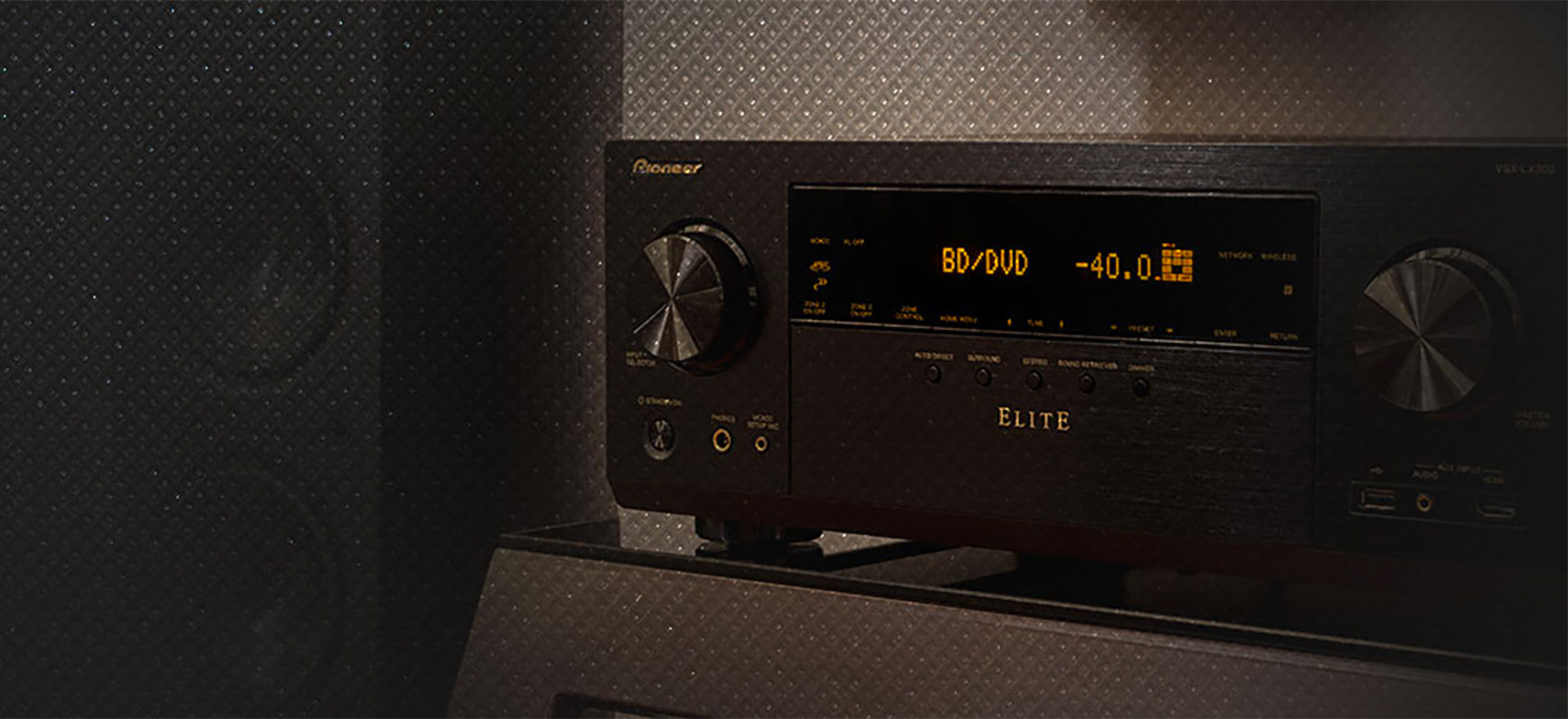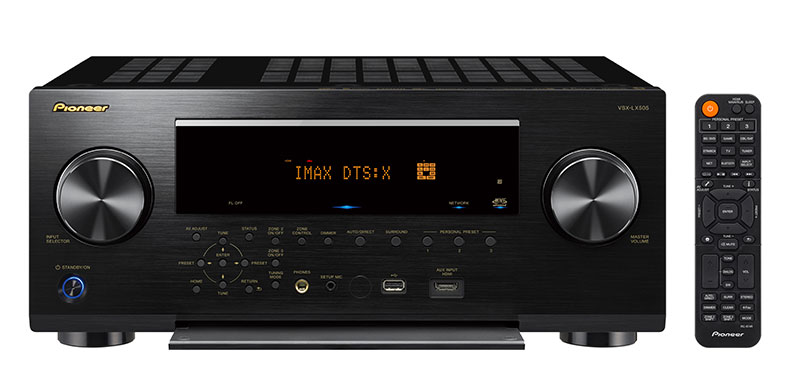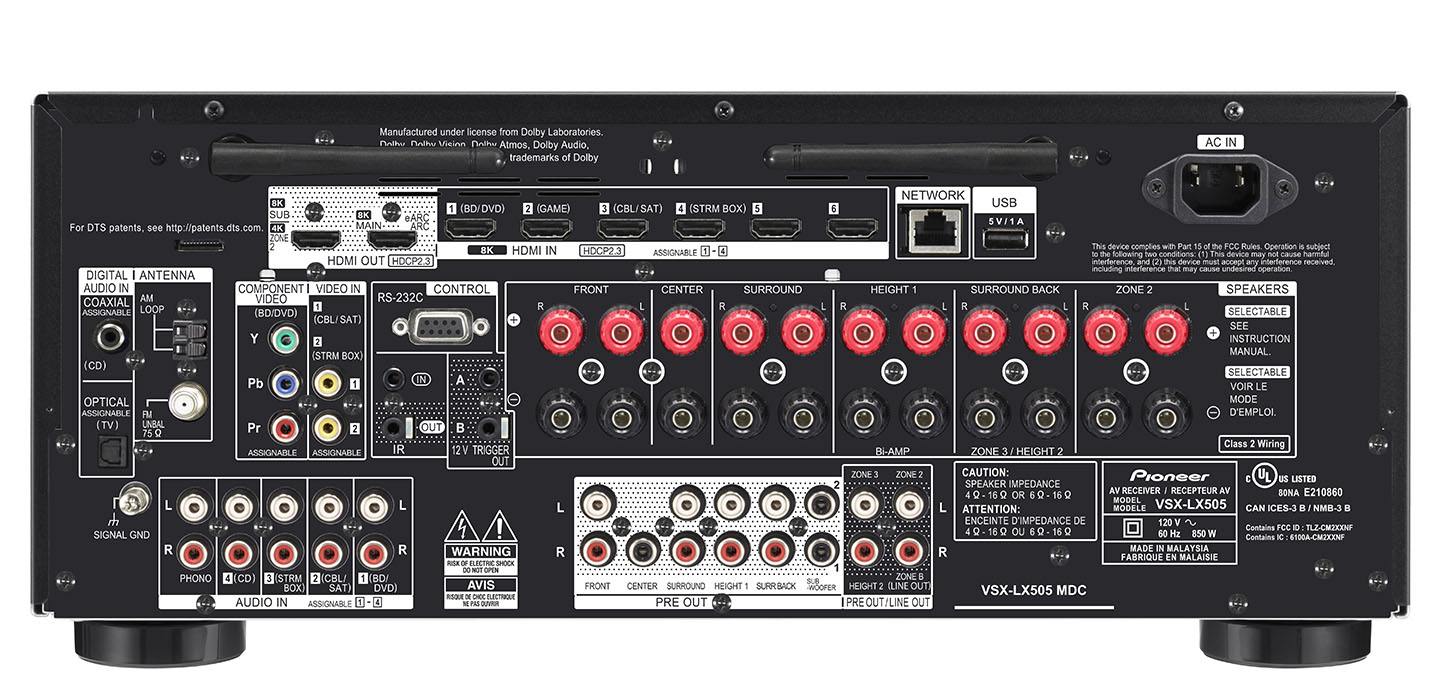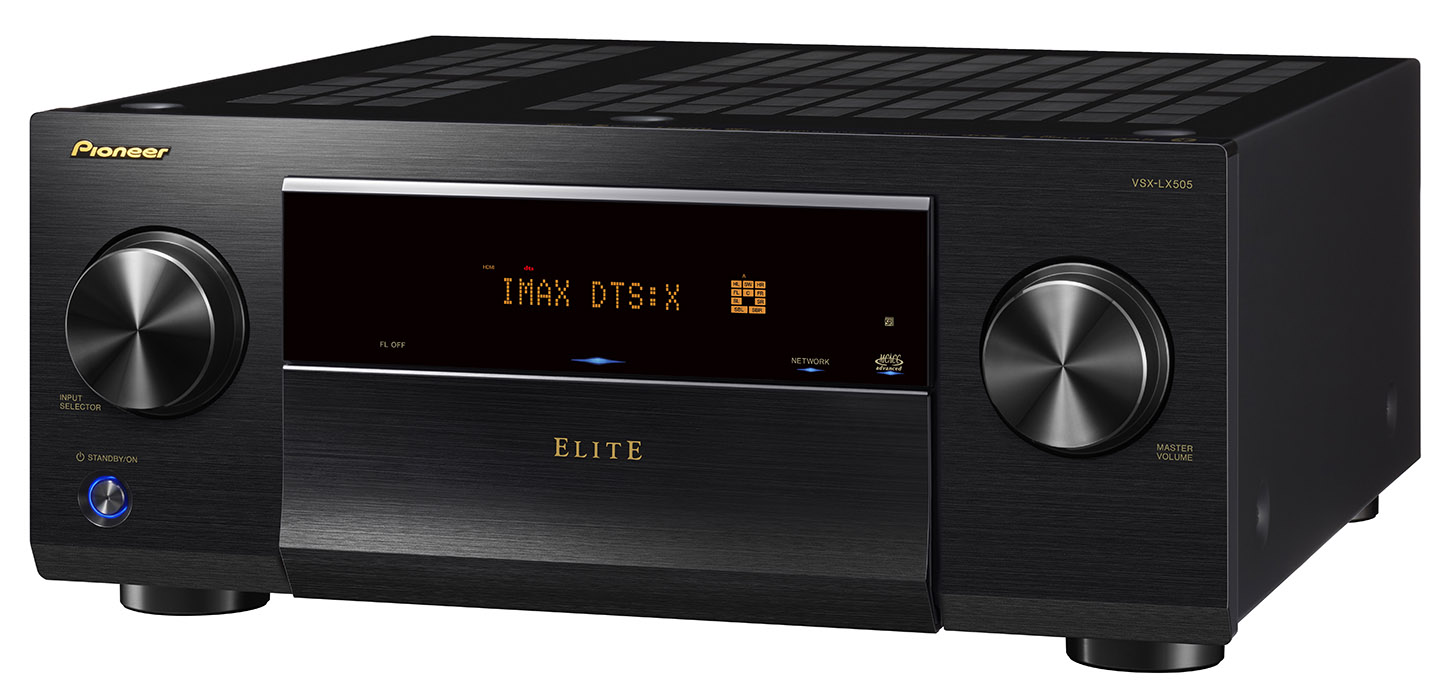 For years, Pioneer receivers have been on the top of many people’s lists as the choice for the heart of their home theatre setup. With the release of this year’s models, the calibre of features on Pioneer receivers continues to show the company’s commitment to creating extraordinary solutions at a variety of price ranges.
For years, Pioneer receivers have been on the top of many people’s lists as the choice for the heart of their home theatre setup. With the release of this year’s models, the calibre of features on Pioneer receivers continues to show the company’s commitment to creating extraordinary solutions at a variety of price ranges.
Pioneer introduced four key models for this year—the Pioneer VSX-935, as well as the Pioneer Elite models VSX-LX105, VSX-LX305, and VSX-LX505.
Pioneer receivers released for 2022
Pioneer once again paves a path towards the ultimate home high-fidelity with the release of new AV Receivers that will be the cornerstone of the majority of serious home theatres. In one Pioneer unit, you’re getting video switching, amplification, and the decoding and processing of high-resolution audio, as well as a number of features that make streaming and voice control a reality.
Why choose a Pioneer receiver?
For those still uncertain about the significant advantages of building your home theatre system around one of these new Pioneer AV Receivers, this article should provide plenty to think about. If you’re serious about getting the most out of your movies, TV shows and sporting broadcasts, a multi-speaker system with a receiver is definitely the solution to choose for those that can accommodate it.
Features on Pioneer receivers
It’s very easy to get lost in the constellation of features listed for each model, but the choice often comes down to a combination of budget and the expandability of the receiver. What’s terrific is that all four units share many core technologies, meaning that at any level you’re going to get an extraordinarily powerful solution that even a few years ago would be almost unthinkable.
Key Shared features:
- Dolby Atmos/DTS:X including upmixers, as well as other relevant codecs for lossless/lossy playback
- 192/24bit DAC
- DSD Playback for SACD/files over HDMI
- eARC on HDMI output
- HDMI 2.1 with 8K/VRR, Dolby Vision passthrough, HDR 10, HLG support, and ALLM and QFT for videogames/next-gen video
- Home networking including AppleAirplay2, Google Assistant, Amazon Alexa, Spotify, Tidal, DTS PlayFi, and Sonos support, with both Ethernet and WiFi built-in
All these models have beefy speaker binding posts that ensure your speakers are securely attached, including the ability to use “banana plugs” for even easier installation. They all have a large number of HDMI inputs to switch between your devices, and this year’s models include features such as 8K/60p support and full HDR compatibility, meaning that for practically any source including all the current game consoles, disc formats, and even high-end computer systems will fully operate with these receivers.
Streaming Services
You can use these receivers to stream from a number of services, including Spotify, Tidal, AppleMusic (via AppleAirplay2), and more. Each model is also Roon tested, meaning you can play files off of your home server for those that have organized their tunes using the popular music management system.
Decoding for Dolby Atmos and DTX:S HD
All models decode the same Spatial Audio codecs such as Dolby Atmos and DTX:S HD as well as other relevant signals for lossless/lossy playback. These soundtracks are mixed not only for traditional surround but to include height or ceiling speakers, making the sound truly immersive!
You can even “upmix” your sound, taking your normal stereo and having it sound like it’s filling the room. With Atmos Height Virtualization you can partially replicate some of the power of object-based audio mixing using your existing speakers, giving you a taste of what a dedicated full Atmos setup can accomplish.
Pioneer receivers have cutting edge wireless integration
Each model of new Pioneer receivers has cutting-edge wireless integration settings. They all have Bluetooth input and output, allowing you to either connect your mobile device or have it play on your speakers. They also all have Ethernet and Wi-Fi built-in, so you can connect your wireless headphones and listen to any of the signals from a given input. Thanks to aptX HD support on output, each model provides exceptional quality to your personal listening for times when you need to temporarily tame the powerful surround sound options.
Control your receiver with your voice
Control of each model can be done via voice control, either using Google or Amazon Alexa’s voice commands, and you can use Siri with Apple’s AirPlay 2 features.
Room Correction and Audio Calibration on Pioneer receivers
Each model includes robust audio calibration allowing you to quickly and easily customize your sound quality for your room using digital equalization to make things sound the way the sound mixers are meant to. On the LX305 the standard MCACC has been upgraded to an advanced mode, able to deal with slightly more complicated arrangements, while the LC505 upgrades to DIRAC, an industry-leading room correction system that’s found on many of the highest-end setups in the industry.
Turntable Playback
All of these models include a dedicated moving magnet phono input, allowing you to connect the vast majority of turntables on the market. The quality of the built-in phono stage is likely to be superior to the models usually included in all-in-one tables, so you’re likely to hear a bump in sound quality right away.
There are a number of “pure music” modes that bypass much of the video circuitry, meaning that when kicking back and listening to tunes you’re getting the most out of the sonic capabilities of these models.
Multi-room audio connections
Each model can also connect to Sonos multi-room systems and DTS Play-Fi, meaning that for those with existing setups you’ll be able to almost immediately take any of your home theatre’s sound and have it playback nearly anywhere in your house or even outside. If you’re not using the additional amp channel for Atmos/DTS:X you can set up a traditional multi-zone layout as well.
Differences between Pioneer receiver models
There are a few differences between the models that you’ll want to make note of if choosing a Pioneer receiver.
7 Channel vs 9 Channel Amplification
Whether you’re listening in stereo or full Atmos surround, these receivers will do a fantastic job. From 80W/ch on the Pioneer VSX-935 up to 120W/ch on the Pioneer LX505, you should have plenty to drive all but the most robust speakers, providing plenty of oomph to whatever soundtrack you throw at it.
All models have twin outputs to connect one or two subwoofers via RCA cable, an absolute must to get the most of these systems. While the Pioneer VSC-935 and Pioneer VSX-LX105 allow for a 7ch setup (5.2.2 for object-based surround), the Pioneer LX305 and Pioneer LX505 have 9 channels of built-in amplification, allowing for a traditional 7ch surround setup at ear level as well as two height speakers.
The Pioneer LX505 has an additional pair of outputs whereby you can connect a standalone stereo amp to drive a total of four ceiling speakers.
Imax Enhanced Mode
On the VSX-LX305 and VSX-505 models, you have Imax Enhanced which is essentially a modified version of the DTS:X format. The designation forms a kind of quality control (similar to what THX-certified used to accomplish), as well as unique post-processing of soundtracks to try and replicate the cinema experience. The advantage is that for some discs and streaming content the receiver will automatically process the IMAX source using its proprietary algorithms enhancing the audio and sometimes tweaking the video. While some purists may wish to stick with the traditional surround track on the source material. What’s great is that you can experiment on those two models, using either the regular DTS:X soundtrack or the IMAX depending on your preference.
Elite vs Non-Elite Pioneer receivers
As you will note, the differences between the Pioneer VSX-935 and its similar spec’d Pioneer VSX-LX105 aren’t considerable, yet the bump from the ‘regular’ series to the famed Elite models is more than simply a new badge and shiny exterior.
The general build and construction on the Elite models is, as the name indicates, slightly more elevated, with more robust materials and the ability to tweak things such as third-party power cabling. While the Pioneer VSX-935 is extremely capable, the Elite models continue Pioneer’s long legacy of providing the premium audio experience.
Key Differentiators:
| Model | VSX-935 | VSX-LX105 | VSX-LX305 | VSX-LX505 |
| Elite | NO | YES | YES | YES |
| HDMI IN/OUT | 6 / 2 | 6 / 2 | 6 / 2 | 7 / 2 |
| IMAX ENHANCED | NO | NO | YES | YES |
| SPEAKER AMPLIFICATION | 7CH (5.2.2 ATMOS with sub pre-out) |
7CH (5.2.2 ATMOS with sub pre-out) |
9CH (7.2.2 or 5.2.4 ATMOS with sub pre-out) |
9ch (7.2.2 or 5.2.4 ATMOS with sub pre-out, or 7.2.4 with external amp) |
| POWER RATING | 80W/ch @8 ohms |
100W/ch @8 ohms |
100W/ch @8 ohms |
120W/ch @8 ohms THD 0.08% |
| ROOM CORRECTION | MCACC AUTO |
MCACC AUTO |
MCACC ADVANCED | DIRAC LIVE® |
| POWER CORD | Built-in | IEC/replaceable | IEC/replaceable | IEC/replaceable |
| AUTOMATION (RS-232C) / IR REPEATERS |
NO | YES | YES | YES |
| DSD MAX | 5.6MHz | 5.6MHz | 11.2 MHz | 11.2 MHz |
Final Thoughts
While the choices may seem overwhelming at first, you really can’t go wrong for most setups with any of these Pioneer units. From the very capable VSX-935 at the top of their main consumer line, through to the three Elite models, you’re likely to find a rock-solid solution for most home theatre needs for years to come.







































